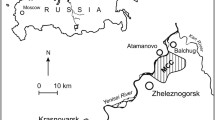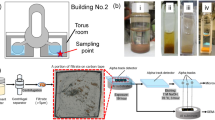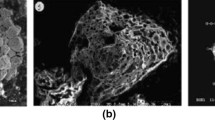Abstract
The morphology and composition both chemical and radionuclide of the main types of the solid-phase “hot” particles formed following the accident on the Chernobyl NPP have been studied by SEM, electron microprobe and gamma-spectrometry methods. Differences in many isotopes including: 106Ru, 134Cs, 137Cs dependent upon the hot particle matrix chemical composition was observed. The classification of hot particles based upon the chemical composition of their matrices has been done. It includes three main types: 1) fuel particles with UOx matrix; 2) fuel-constructional particles with Zr-U-0 matrix, 3) hot particles with metallic inclusions of Fe-Cr-Ni. Moreover, there are more rare types of hot particles with silicate or metal matrices. It was shown that only metallic inclusions of Fe-Cr-Ni are concentrators of 106Ru, which caused this nuclides assimilation in the molten stainless steel during the initial stages of the accident. Soils contamination of non-radioactive lead oxide particles in the Chernobyl NPP region were noticed. It was supposed that part of metallic lead, dropped from helicopters into burning reactor during first days of accident, was evaporated and oxidized accompanying solid oxide particles formation.
Similar content being viewed by others
References
Publications series on safety No.75-INSAG-l, Proceedings of Conference on Studies of Causes and Consequences of Chernobyl Accident, IAEA, Vienna, 1988, STI/PUB/740, ISBN-92-0-423088-6.
A. A. Borovoy, Inside and outside “Sarcophagus”, Chernobyl: CE IAE, 1990 (in Russian).
P. Jaracz, E. Piasecki, S. Mirowski, Z. Wilhelmi, Analysis of gamma-radioactivity of “hot particles” released after the Chernobyl accident. Part 2. An Interpretation, Journal of Radioanalytical and Nuclear Chemistry, Vol. 141, No. 2, p. 243–259, (1990).
B. E. Burakov, E. B. Anderson, B.Ya. Galkin, E. M. Pazukhin and S. I. Shabalev, Study of Chernobyl “hot“ particles and fuel containing masses: implications for reconstructing the Initial Phase of the Accident, Radiochimica Acta 65, 199–202 (1994).
S. V. Ushakov, E. B. Anderson, B. E. Burakov, S. I. Shabalev Interaction of UQ2 and zircaloy during the Chernobyl accident, (published in these Proceedings).
Acknowledgement
Presentation of this paper and the participation of the authors in this symposium were financially supported by Material Research Society and International Science Foundation / Logovaz.
Author information
Authors and Affiliations
Corresponding author
Rights and permissions
About this article
Cite this article
Shabalev, S.I., Burakov, B.E. & Anderson, E.B. General Classification of “Hot“ Particles from the Nearest Chernobyl Contaminated Areas. MRS Online Proceedings Library 465, 1343–1350 (1996). https://doi.org/10.1557/PROC-465-1343
Published:
Issue Date:
DOI: https://doi.org/10.1557/PROC-465-1343




